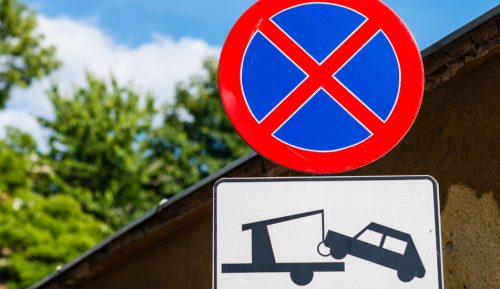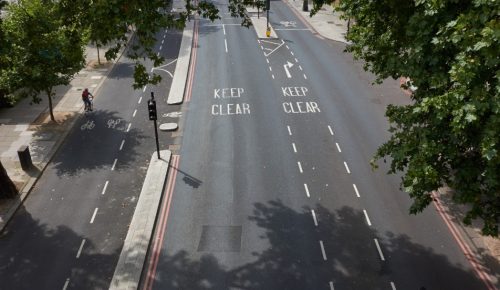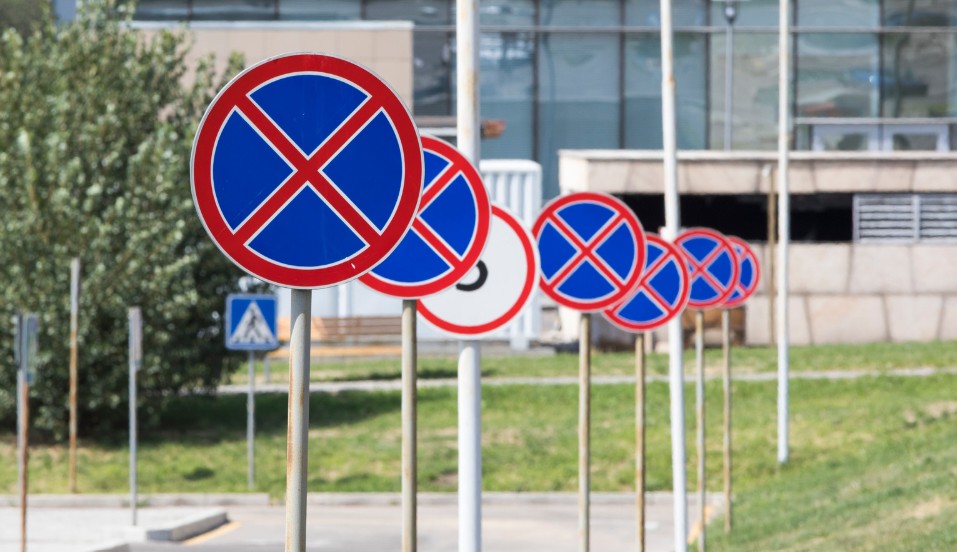Table of Contents
Have you ever driven on a busy road and noticed an Urban Clearway sign but were unsure of what it meant?
Understanding when may you stop on an urban clearway is crucial to avoid fines and keep traffic flowing smoothly.
Urban clearways are special roadways with restrictions on stopping during certain hours to reduce congestion.
They are commonly found in busy cities and high-traffic areas, ensuring roads remain clear during peak hours.
However, there are specific exceptions to the no-stopping rule, and failing to follow them can lead to penalties.
This guide explains everything you need to know about urban clearways in the UK, their rules, exceptions, and consequences of stopping illegally.
By the end, you will be able to identify clearways, understand their restrictions, and drive confidently while following the law.
What Is an Urban Clearway?

An urban clearway is a designated road where stopping is restricted during peak hours to prevent traffic congestion.
Unlike red routes, which ban stopping entirely, urban clearways allow brief stops in specific cases, such as dropping off passengers.
Their main purpose is to maintain smooth traffic flow, especially in busy areas during rush hours.
These restrictions help reduce road obstructions, making travel safer and more efficient. Urban clearways are marked by a blue circular sign with a red cross and two diagonal lines.
A sign below it indicates the restricted hours, during which stopping is prohibited. Outside these hours, stopping or parking is usually allowed unless other restrictions apply.
Local councils enforce these rules using CCTV and traffic wardens, and violations can result in fines or penalty points on a driver’s record.
How Do Urban Clearways Work in the UK?
Urban clearways operate by restricting vehicles from stopping or parking during peak traffic hours.
These hours are usually displayed on a sign below the clearway symbol, and they often coincide with busy commuting times, such as 7:00 AM – 9:30 AM and 4:00 PM – 6:30 PM.
During these restricted hours:
- Vehicles cannot stop or park unless dropping off or picking up passengers.
- Loading and unloading of goods are not permitted unless stated otherwise.
- Emergency vehicles and disabled badge holders may be exempt, depending on local rules.
Outside the restricted hours, drivers can stop or park unless additional parking restrictions apply.
However, stopping for an extended period during restricted hours can lead to fines, penalty points, or towing.
Local authorities often monitor compliance through traffic cameras and patrol officers.
Why Does an Urban Clearway Matter?

Urban clearways are essential for maintaining efficient and safe traffic flow in busy areas.
These restrictions ensure roads remain clear during peak times, improving travel for commuters, emergency services, and public transport.
Traffic Management
- Helps reduce congestion during peak hours by preventing unnecessary stops.
- Ensures public transport moves smoothly, reducing delays for buses and taxis.
Road Safety
- Prevents accidents caused by sudden stops on busy roads.
- Keeps lanes clear for cyclists and pedestrians, improving overall safety.
Legal Compliance
- Helps drivers avoid fines and adhere to UK road laws.
- Encourages responsible road usage, preventing unnecessary delays.
Environmental Benefits
- Reduces idling emissions, improving air quality.
- Supports sustainable urban mobility by prioritising public transport.
Urban clearways are crucial in ensuring fast, safe, and efficient travel in urban areas while promoting legal compliance and sustainability.
What Are the Legal Restrictions on Stopping in an Urban Clearway?
Stopping on an urban clearway is strictly regulated under the UK Highway Code to ensure traffic flow and safety.
Stopping or parking during restricted hours is generally prohibited, except in limited cases.
Key Legal Restrictions
- No stopping during designated hours unless dropping off or picking up passengers.
- No parking, waiting, or loading, even momentarily.
- Fines and penalties apply for violations, with enforcement via CCTV and traffic wardens.
Exceptions
- Emergency vehicles responding to an incident are allowed to stop.
- Disabled badge holders may be exempt in some locations.
- Temporary permissions may apply during roadworks if marked by appropriate signage.
Local councils enforce these restrictions to prevent congestion, reduce accidents, and ensure road safety.
Drivers must always check signage before stopping, as rules can vary by location.
When May You Stop on an Urban Clearway in the UK?
Stopping on an urban clearway is generally prohibited during restricted hours unless specific exceptions apply.
Stopping unnecessarily could lead to fines and penalties, so drivers must follow the regulations carefully.
You may stop in an urban clearway only under the following circumstances:
- To pick up or drop off passengers, provided there is no obstruction to traffic.
- Outside restricted hours, as indicated on roadside signage.
- In case of a vehicle breakdown, but only if you take immediate steps to move your car safely.
If you stop illegally, local authorities may issue fines or penalty points on your licence.
Always check the signage before stopping in an urban clearway and plan your journeys to avoid unnecessary risks.
What Is the Difference Between an Urban Clearway and a Red Route?

Urban clearways and red routes are both designed to manage traffic flow, but they operate under different rules. Understanding these differences is crucial to avoiding penalties.
Urban Clearway
- Stopping is only allowed for passenger drop-offs. Drivers cannot park or wait, even briefly, during restricted hours.
- Restrictions apply only during specified hours. Typically, urban clearways operate during rush hours but allow stopping outside these times.
- Found mainly in city centres and congested roads. Urban clearways are designed to prevent traffic buildup in high-density areas.
Red Route
- Stopping is prohibited at all times unless at designated bays. Unlike urban clearways, red routes do not allow stopping for any reason except at marked bays.
- Enforced 24/7, with stricter penalties for violations. Fines are generally higher for stopping on a red route compared to an urban clearway.
- Found mainly on major roads and highways. Red routes are common in London and other large cities where traffic congestion is a major concern.
Both are monitored through CCTV cameras and traffic wardens to ensure compliance.
If you are driving in London or other major cities, red routes are far more common than urban clearways. Always pay attention to road signs to distinguish between them.
How Can You Identify an Urban Clearway While Driving?
Recognising an urban clearway is essential to avoid penalties and comply with UK traffic laws.
These zones are clearly marked, but drivers must understand specific signs and symbols to follow the rules correctly.
Look for a Blue Circular Sign
A blue circular sign with a red X and two diagonal lines clearly indicates a no-stopping zone during designated hours.
Check for a Yellow Time Restriction Plate
A yellow plate below the sign usually specifies enforcement hours, informing drivers exactly when clearway rules apply.
Observe Road Markings Carefully
Some clearways have additional restrictions, such as double yellow lines or restricted loading bays, reinforcing strict no-stopping rules.
Stay Aware of High-Traffic Areas
Clearways are commonly found in busy city centres and main roads to prevent congestion and improve smooth traffic flow.
If unsure whether you are in an urban clearway, check local council regulations or online traffic updates for confirmation.
Ignoring restrictions can result in fines or penalty points, so always pay attention to signage and road markings.
Are There Any Parking Exemptions on an Urban Clearway?

Parking on an urban clearway is not permitted during restricted hours unless an exemption applies. However, there are a few special cases where stopping may be allowed.
Who Is Exempt?
- Emergency services can stop if responding to an incident.
- Disabled badge holders may park in certain areas if local laws permit.
- Roadworks may temporarily override clearway rules, as indicated by special signage.
Outside restricted hours, stopping is generally allowed, but additional parking restrictions may still apply. Always check for parking signs before leaving your vehicle unattended.
What Happens If You Stop Illegally on an Urban Clearway?
Stopping illegally on an urban clearway can result in penalties, as these restrictions are enforced to ensure smooth traffic flow and road safety.
Understanding the consequences can help you avoid fines and other legal issues.
Fines and Penalties
- Violating clearway rules can result in fines ranging from £100 to £130, depending on the location and severity of the offense.
Penalty Points
- Repeated violations may lead to penalty points being added to your driving licence, increasing the risk of further legal consequences.
Vehicle Towing
- If your vehicle causes an obstruction or is parked illegally, authorities may tow it, leading to additional charges for retrieval.
To avoid penalties, always check urban clearway signs, stop only where permitted, and plan your journey to steer clear of restricted areas during peak hours.
How Do Urban Clearway Rules Affect Businesses and Deliveries?

Urban clearway restrictions pose challenges for businesses and delivery drivers, as stopping in these areas is highly regulated.
However, there are ways to work within the rules while ensuring efficient deliveries.
Challenges
- Limited stopping areas can make unloading goods extremely difficult and time-consuming.
- Risk of fines if delivery drivers stop in restricted traffic zones without permission.
Solutions
- Schedule deliveries outside restricted hours to avoid unnecessary fines and delays.
- Use designated loading bays, where available, for legal parking and safe unloading.
- Apply for permits if the local council offers specific exemptions for commercial delivery vehicles.
Businesses operating in urban areas should plan routes carefully, ensuring that deliveries remain efficient and legally compliant.
What Should You Do If You Need to Stop on an Urban Clearway?
If you must stop on an urban clearway, you should consider alternative options to avoid penalties. Proper planning can help you stay within the law while ensuring minimal disruption to traffic.
Alternative Options
- Find side roads or lay-bys nearby where stopping is allowed.
- Stop only outside restricted hours, as indicated on road signs.
- Use permitted taxi ranks or delivery zones if you are a driver needing to pick up or drop off passengers.
If your vehicle breaks down, move it as quickly as possible to avoid penalties. Always check local signage before stopping in an unfamiliar area.
Conclusion
Understanding urban clearways in the UK is crucial for drivers to avoid fines and maintain road safety.
These restrictions prevent congestion, keep roads clear for public transport, and reduce pollution by minimising idling vehicles.
By learning to identify clearway signs and following the designated stopping rules, you can drive confidently and legally.
Always check road signs and local regulations before stopping, as enforcement varies across different cities and councils.
Planning ahead will help you navigate urban roads efficiently, ensuring compliance with UK traffic laws while avoiding unnecessary penalties.
FAQs About When May You Stop on an Urban Clearway
What time restrictions apply to urban clearways in the UK?
Urban clearway restrictions typically apply during peak hours, such as 7:00 AM – 9:30 AM and 4:00 PM – 6:30 PM, but always check the road signs.
Can taxi drivers stop on an urban clearway?
Taxi drivers may briefly stop to pick up or drop off passengers but cannot park or wait during restricted hours.
Are urban clearways enforced nationwide in the UK?
Yes, urban clearways are enforced across the UK, but specific rules and operating hours vary depending on local council regulations.
How do urban clearway rules impact emergency vehicles?
Emergency vehicles are exempt from urban clearway restrictions when responding to incidents, ensuring quick and safe passage.
Is there a difference between an urban clearway and a rural clearway?
Yes, a rural clearway prohibits stopping at all times, while an urban clearway has time-based restrictions during peak hours.
Do urban clearway restrictions apply to cyclists?
Cyclists can ride on urban clearways but must follow standard traffic laws and avoid stopping unnecessarily during restricted hours.
Can roadworks temporarily override urban clearway rules?
Yes, temporary roadwork signs may override urban clearway restrictions, allowing vehicles to stop in designated areas if necessary.




